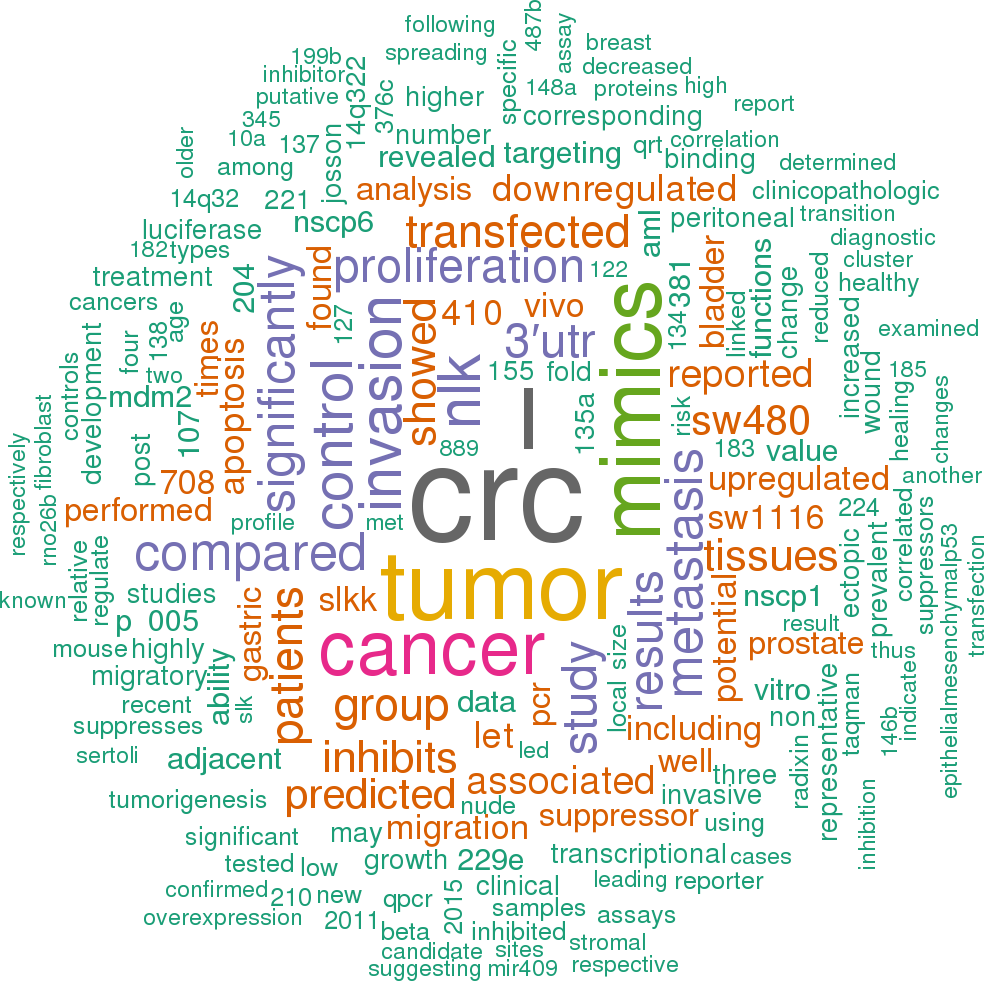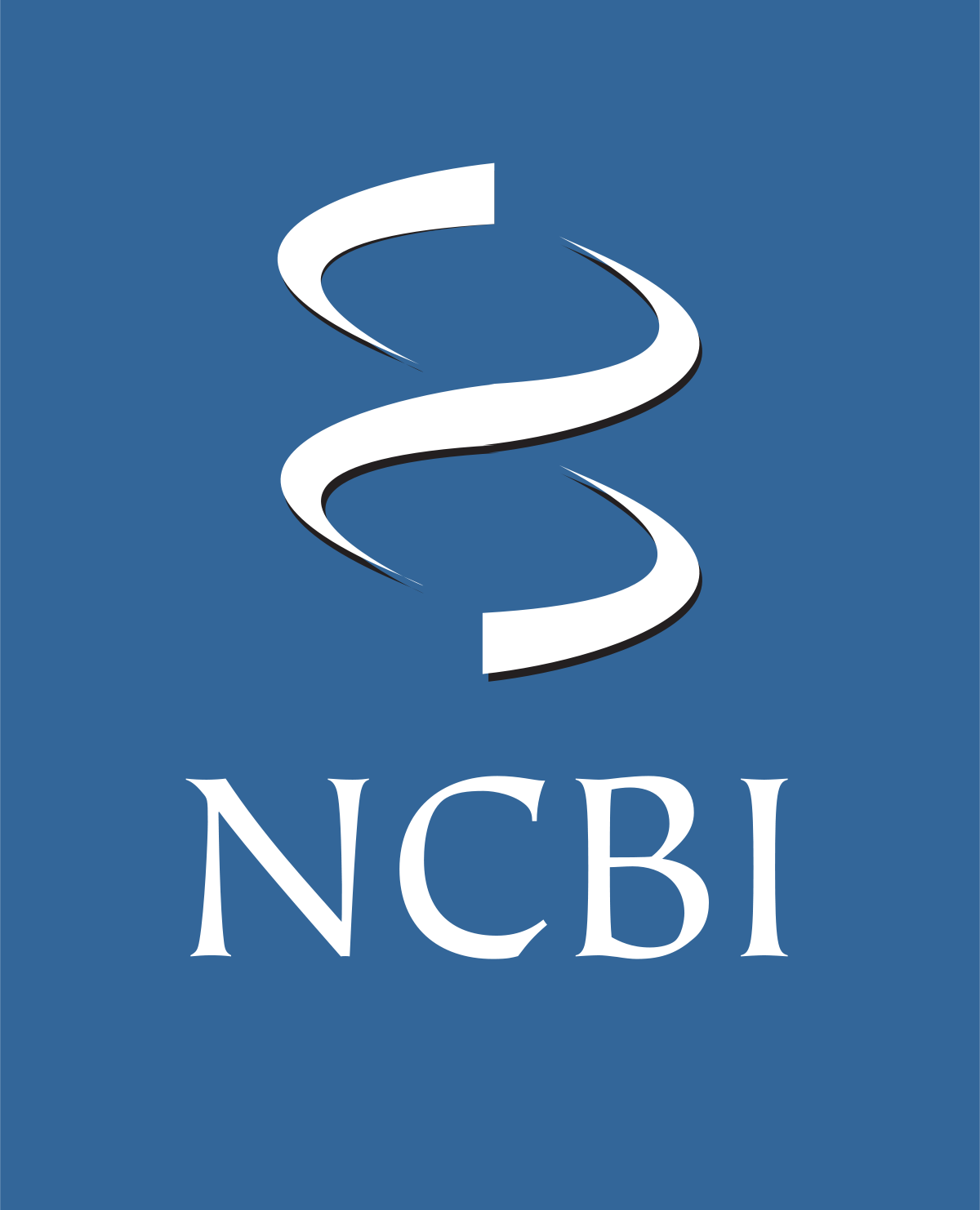Accession
MI0001735
Symbol
HGNC:
MIR409
Description
Homo sapiens
hsa-mir-409 precursor miRNA
Summary
Caution, this is an AI generated summary based on literature. This may have errors. ?
MIR409 is a microRNA implicated in various biological processes and diseases, including its deregulation in gastrointestinal stromal tumors (GISTs), where it is expressed higher in intestinal compared to gastric tumors [PMC5796982]. It is part of the DLK1-DIO3 genomic region and belongs to cluster B of the microRNA cluster [PMC7308478]. MIR409's downregulation has been associated with the early onset of fibrosis in livers co-infected with HCV and HIV, suggesting a role in extracellular matrix remodeling [PMC8869900]. It has been predicted to target genes such as SRY-box containing gene 6 (Sox6), which could have implications for various cellular functions [PMC4488424]. MIR409, along with other muscle-specific microRNAs, has been shown to induce induced cardiomyocytes (iCMs) from mouse cardiac fibroblasts, indicating its potential role in cardiac regeneration [PMC6679082]. Furthermore, MIR409's expression has been linked with traits such as weight and lean mass, suggesting its utility as a biomarker for weight loss [PMC5659802]. In pathological conditions like severe drug reactions (SJS/TEN) and pancreatic ductal adenocarcinoma (PDAC), MIR409's expression levels have been associated with disease progression and prognosis [PMC9027774], [PMC10057657].
Literature search

56 open access papers mention hsa-mir-409
(192 sentences)
(192 sentences)
Sequence
8528
reads,
122
reads per million, 121 experiments
ugguacucggggagAGGUUACCCGAGCAACUUUGCAUcuggacgacGAAUGUUGCUCGGUGAACCCCUuuucgguauca
((((((.(((((((.((((..((((((((((((((........).)))).)))))))))..)))).)))))))))))))
((((((.(((((((.((((..((((((((((((((........).)))).)))))))))..)))).)))))))))))))
Structure
u A AC - - AUc
ugguac cggggag GGUU CCGAGCAAC UUUG C u
|||||| ||||||| |||| ||||||||| |||| |
acuaug gcuuuUC CCAA GGCUCGUUG AAGc g g
- C GU U a cag
Annotation confidence
High
Do you think this miRNA is real?
Comments
The mature sequence shown here represents the most commonly cloned form from large-scale cloning studies [4]. The 5' end of the miRNA may be offset with respect to previous annotations.
Genome context
chr14: 101065300-101065378 [+]
Clustered miRNAs
10 other miRNAs are < 10 kb from hsa-mir-409
| Name | Accession | Chromosome | Start | End | Strand | Confidence |
|---|
Disease association
hsa-mir-409 is associated with one or more human diseases in the Human microRNA Disease Database
| Disease | Description | Category | PubMed ID |
|---|
Mature hsa-miR-409-5p
| Accession | MIMAT0001638 |
| Description | Homo sapiens hsa-miR-409-5p mature miRNA |
| Sequence | 15 - AGGUUACCCGAGCAACUUUGCAU - 37 |
| Evidence |
experimental
cloned [1,3-4] |
| Database links |



|
| Predicted targets |



|
Mature hsa-miR-409-3p
| Accession | MIMAT0001639 |
| Description | Homo sapiens hsa-miR-409-3p mature miRNA |
| Sequence | 47 - GAAUGUUGCUCGGUGAACCCCU - 68 |
| Evidence |
experimental
cloned [1,3-4], array-cloned [2] |
| Database links |



|
| Predicted targets |



|
References
|



